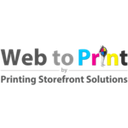In the quickly transforming environment of the printing sector, web-to-print software has become a transformative element, bridging the divide between traditional printing practices and the digital era. As businesses are increasingly trying to enhance their operations, minimize errors, and boost customer experiences, grasping such technology is crucial. This full guide aims to clarify web-to-print technology, examining how they alter the print industry and the benefits they offer to printing businesses and companies alike.
Ranging from improving order processing and work processes to facilitating customization and customization, web-to-print software is reshaping the way print providers perform. As we investigate the main attributes, integration possibilities, and pricing strategies, we will also discuss the distinctions between web-based printing and traditional printing methods. At the end of this piece, you will have a clear comprehension of how web-to-print solutions can enhance your printing enterprise and contribute to its enduring prosperity.
Grasping Print-on-Demand Solutions
Web to Print solutions is a technology platform that permits users to produce, modify, and purchase physical prints online. This solution simplifies the printing process for both businesses and consumers, allowing a more efficient workflow. Customers can access a broad selection of design templates and creative tools through a web-based interface, removing the necessity for professional design applications. Whether it’s company cards, pamphlets, or promotional materials, the web-to-print solution allows customers to manage the production process from initiation to completion.
One of the main capabilities of the web-to-print solution is its functionality to support personalization and individualization. Users can add their custom designs, include text, pick colors, and pick various layouts. This capability is particularly useful for companies seeking to establish a solid brand presence, as they can develop tailored promotional products that resonate with their desired customers. With features like custom content generation, the platform can instantly create personalized content for multiple customers, boosting engagement and success.
Moreover, web-to-print software significantly improves order management and process effectiveness. By automating many of the laborious tasks historically involved in the printing industry, such as proof checking and order monitoring, organizations can save time and minimize inaccuracies. Integrated online shopping capabilities permit printing companies to manage orders directly through their e-commerce platform, delivering clients a seamless purchasing experience. This shift not only improves operational capability but also brings about increased client satisfaction and loyalty, vital for prosperity in a competitive print market.
Benefits and Features of Web-to-Print Solutions
Web2Print solutions offer a wide range of advantages that significantly enhance the productivity and performance of print operations. One of the primary benefits is the streamlined ordering process, which allows customers to make and customize their orders online at any time. This convenience not only boosts customer satisfaction but also minimizes the need for physical order entry, lessening the likelihood of errors. By simplifying the order management process, print shops can focus more on production and fulfillment rather than administrative tasks.
Another crucial feature of web-to-print software is its feature to provide comprehensive customization options. Customers can make personalized products by selecting templates, uploading images, and altering text directly on the platform. This extent of personalization enables consumers and boosts engagement, leading to more fruitful sales conversions. Additionally, the software often includes easy-to-use design tools that permit clients to visualize their projects before submitting an order, ensuring that the final product matches with their expectations.
Moreover, web-to-print solutions often come equipped with powerful integration capabilities, allowing businesses to integrate their e-commerce platforms seamlessly. This integration improves the overall workflow by coordinating inventory, keeping tabs on orders, and controlling customer data effectively. As a result, print shops can maintain a higher degree of accuracy in their operations while leveraging data analytics to better understand customer preferences and improve their offerings. These features together contribute to enhanced productivity, reduced operational costs, and a better competitive edge in the dynamic print industry.
Future Trends and Innovations in Print-on-Demand
As the print industry continues to develop, online printing software is set to play a crucial role in its progress. check my reference of the most significant developments is the adoption of AI and machine learning technologies. These advancements will enable printing companies to enhance various operations, from developing and tailoring print products to effectively handling orders and stock. The adoption of AI will enable insight-based decision-making, permitting businesses to assess customer behavior, forecast trends, and customize marketing strategies, creating a more personalized experience for clients.
Eco-friendliness will also be a central theme in the next phase of Web-to-Print services. As ecological issues rise, print businesses are increasingly embracing eco-friendly procedures. This includes using green resources and adopting technologies that reduce waste and energy use. Web-to-Print software will develop to facilitate these initiatives, providing resources for clients to select eco-friendly choices and assess their print projects' sustainability effects. Companies will not only focus on gains but also on supporting sustainability to the planet.
In conclusion, cloud-based solutions will continue to transform how businesses run within the Web-to-Print landscape. The transition to cloud technology ensures that software enhancements, safety, and scalability become more easier for print shops of all sizes. This democratization of access means that small and medium-sized enterprises can leverage state-of-the-art tools once limited only to larger corporations. As the software landscape advances, businesses will discover new ways to enhance user interactions, streamline workflows, and adapt to shifting demands, further reinforcing the role of Web-to-Print in the modern printing industry.

